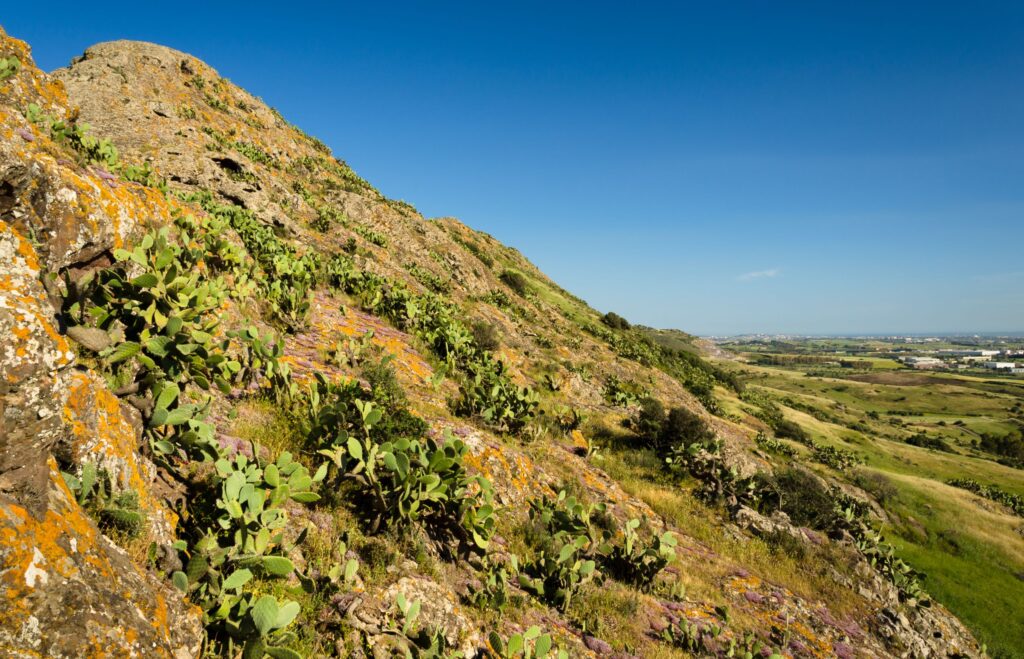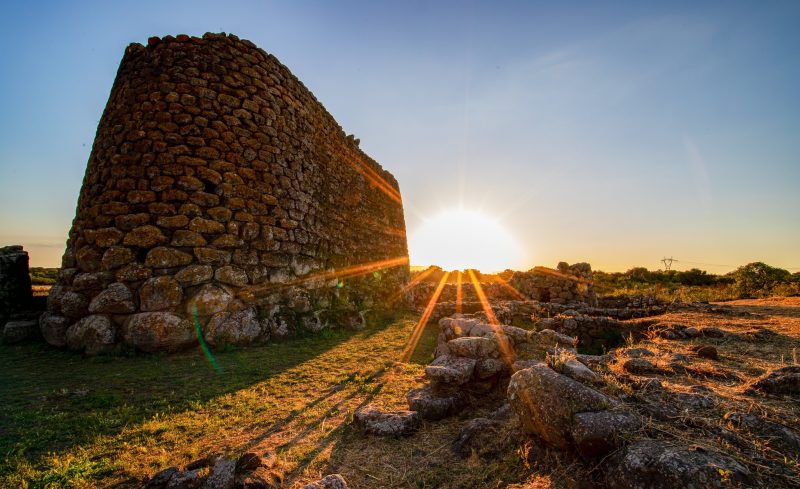Imagine an ordinary day over three thousand years ago. The sun sets slowly among the Guilcer hills (a geographical area in the centre of Sardinia), dyeing the cyclopean towers of the nuraghi with copper. A man rests his bare feet on bunches of dark grapes, rhythmically pressing them into a basin carved into the rock. Beside him, a woman pours must into decorated clay jugs. That gesture, repeated every year, is the first Sardinian toast in history.
In Sardinia, wine was already being produced before the Greeks and Romans. And today, thanks to archaeology, we can reconstruct the traces left by a civilisation that also carved the ritual of drinking in stone.
✅ The first vines cultivated in Sardinia: a revolutionary discovery.
Publication 'Vine and wine at the time of the nuraghi' revealed extraordinary evidence: the presence of domesticated vine in Sardinia already in the Medium Bronze, much earlier than in other regions of Europe.
In the Nuragic well of Sa Osa (Cabras), excavated since the 2000s, more than 15,000 carbonised and mineralised grape seeds were found, dated between the 14th and 9th centuries BC. Morphometric and genetic analyses (Bacchetta et al.) showed that these were vitis vinifera subsp. vinifera, i.e. domesticated grapes, and not wild grapes.
The seeds were stored in a closed archaeological layer, together with cereal and legume seeds, suggesting a complex and already specialised agriculture.
✅ Winemaking among the Nuraghi: technology and tradition.
The studies illustrated in the publication confirm the use of lithic wine presses. At the site of Monte Zara (Monastir), the trapezoidal tank carved in the rock (rock press) was analysed using modern techniques: HPLC and UHPLC spectrometry, which detected tartaric acid, succinic acid and other organic compounds residual from fermentation. This is the oldest press in the western Mediterranean currently documented, and dates back to the Iron Age (9th-8th century BC).
'Sardinia represents the oldest documented area for vine domestication in the entire western Mediterranean'.
— Bacchetta, Caboni, Sarigu, La vite e il vino al tempo dei nuraghi

In Nuraghe Genna Maria (Villanovaforru), another wine press has been identified as a functional facility for wine production on a significant scale. According to the publication, each cycle could process up to 250 kg of grapes, with a yield of around 100-120 litres of must. An extraordinary efficiency for the time.
✅ Wine as a symbol: ritual, status and community.
The studies described in the work also highlight the ritual and symbolic importance of wine among the Nuragics.
Askoi, jugs and glasses have been found in religious and funerary contexts, with traces of organic substances compatible with wine. In particular, in the sanctuaries of S'Arcu 'e Is Forros, Serri, and Villanovafranca, wine was consumed collectively in ritual contexts, probably linked to worship and community identity.
"Wine was associated with religious practices, ceremonial exchanges and moments of gathering. It was not just a foodstuff, but an element charged with symbolic value." - La vite e il vino al tempo dei nuraghi.
✅ A wine economy already globalised?
The publication's analysis also goes beyond the island: Sardinian amphorae found in the wreck of Ulu Burun (near Malta), containing traces of wine, show that Sardinia exported wine to the eastern Mediterranean already in the Final Bronze Age.
This testifies not only to an organised production, but also to an astonishing commercial and relational capacity for a people without writing.
✅ Un’eredità viva: il vino nuragico oggi.
According to the authors of the study, Cannonau could be the direct heir of the ancient Nuragic vines. Genetic analyses on grape seeds found at various sites (Sa Osa, Borore, Sardara) show a morphological and genetic continuity with present-day varieties. When we taste a glass of Cannonau today, we may be closer than we imagine to what the Nuragics drank three millennia ago.

✅ For those who want to learn more.
Main publication:
- La vite e il vino al tempo dei nuraghi.
Authors: G. Bacchetta, P. Caboni, M. Sarigu, M. Ucchesu.
University of Cagliari - Department of Life and Environmental Sciences.
Other useful references:
- Bacchetta et al. (2020), Vinaccioli domestici a Sa Osa, in ResearchGate.net.
- Ercole Contu, Ed. Carlo Delfino (2019): Un drink al nuraghe.
- Le Strade Del Vino: Alle radici del vino sardo.
- Sardegna Turismo: Il vino in Sardegna da tremila anni.
👉 N.b.: The header image depicts the Nuragic winepress found at Monastir near Monte Zara. From famedisud.it.


